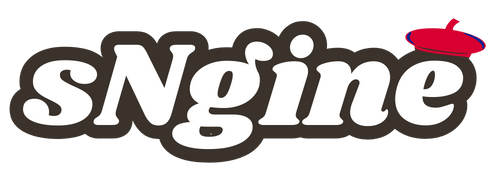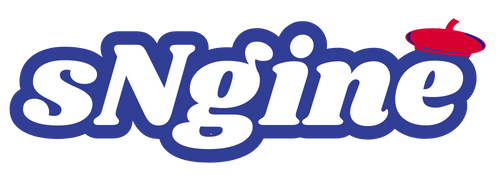Every creation or manufacturing assignment starts as an idea—sketched, refined, and in the long run transformed into a buildable plan. The gap between concept and entirety frequently depends on one critical thing: the great and accuracy of the drawings. This is where CAD offerings make a difference. They rework rough ideas into precise, editable digital designs that not most effective appear suitable on screen but also work seamlessly in the real global.
Why Efficiency Starts with Accuracy
A single misalignment or size blunder can ripple through a whole mission, delaying schedules and inflating prices. With drafting services, those problems are caught early, earlier than the primary piece of fabric is cut or set up. Precision becomes greater than a buzzword; it will become the muse of undertaking performance.
CAD services ensure that every perspective, line, and annotation follows industry standards. That accuracy leads to quicker approvals, cleaner communication among engineers and developers, and a ways fewer requests for statistics (RFIs).
An appropriate drafter doesn’t simply draw; they suppose ahead. They count on which tolerances that would possibly cause friction and refine designs accordingly.
The Real Power of Digital Drafting
Digital drafting changed hand drawings decades in the past, but many corporations nonetheless underuse its full capability. Modern drafting services go far beyond growing static 2D plans. They supply layered, fact-rich models that deliver structure, characteristics, and visual readability together.
These fashions:
-
Allow design groups to visualize complex structures earlier than fabrication.
-
Enable engineers to check clearances, structural helps, or mechanical flows clearly.
-
Help contractors pick out and remedy conflicts inside the layout section in place of the sphere.
By simulating actual global conditions, CAD services cut down on site changes, which regularly drain time and assets. Every hour saved on corrections will become an hour invested in progress.
Collaboration: The Hidden Multiplier
Projects rarely exist in isolation. Structural, electric, plumbing, and architectural disciplines should all align perfectly. Miscommunication among groups can motivate pricey overlaps or transform. With expert drafting offerings, each area stocks the same digital language.
When drawings are constructed on consistent layering, naming requirements, and scale accuracy, pass-field coordination becomes smoother.
A mechanical engineer can overlay their plans on the structural grid without guessing clearances. An architect can verify ceiling heights in opposition to HVAC layouts earlier than a unmarried duct is mounted.
That collaborative readability often separates a properly-run undertaking from a chaotic one.
Speed Without Sacrificing Quality
Speed subjects in nowadays’s speedy-song projects, but rushing the layout can backfire. The balance comes from prepared, template-driven workflows—something amazing CAD services offer, obviously.
https://caddrafters.us/what-is-bim/
Efficient drafting teams preserve:
-
Reusable block libraries for doorways, furnishings, and popular additives.
-
Predefined title blocks and sheet templates to lessen setup time.
-
File control protocols that ensure version control and short access.
These habits may also seem minor, but throughout a big challenge, they save dozens of hours. When drawings are constant and documents are smooth to navigate, evaluate cycles cut back, and production can begin in advance.
Drafting services don’t simply draw faster—they assist teams to think quickly.
three-D Visualization and Clash Detection
One of the biggest leaps in layout productivity comes from combining 2D and three-D drafting.
A nicely-advanced 3-D version highlights issues invisible on a flat plan: intersecting pipes, misplaced beams, or misaligned facades.
That’s why three-D CAD offerings have become a default for many engineering and architectural corporations.
Clash detection tools inside CAD software programs routinely flag conflicts, allowing layout teams to modify layouts in hours in place of weeks. This doesn’t just prevent production issues—it builds confidence among stakeholders who can visualize the very last final results with accuracy.
-
Benefits of 3-D CAD integration encompass:
-
Early detection of design conflicts.
-
Better cloth-making plans via accurate quantity take-offs.
-
Easier consumer approvals with practical visualizations.
-
Reduced the need for discipline corrections and remodel.
-
When groups can see their designs take form digitally, they communicate thoughts more clearly, make faster choices, and keep away from luxurious missteps.
Documentation and Long-Term Value
A venture’s efficiency isn’t just about constructing quicker—it’s also approximately maintaining readability after handover. Well-organized drafting offerings create drawings that become lengthy-time period belongings. Facility managers depend on accurate “as-constructed” documentation for maintenance, retrofits, and expansions.
Clear CAD documents:
-
Reduce downtime for the duration of destiny changes.
-
Provide reliable statistics for compliance and audits.
-
Help protection groups discover structures or utilities without disruption.
The precision that saves time for the duration of production continues to pay dividends for years after the crowning glory. That’s the long game of CAD services—turning transient tasks into lasting, practicable property.
Common Mistakes That Undermine Efficiency
Even experienced teams can stumble if documentation standards slip. Common pitfalls encompass:
-
Overlapping layers that confuse distinct disciplines.
-
Missing name blocks or inconsistent scaling.
-
Untracked revisions that result in old drawings in the flow.
Avoiding those requires clean coordination protocols and routine drawing audits. Professional drafting services encompass these tests as a part of their workflow, ensuring that nothing slips through the cracks.
A Practical Approach to Smarter Design
To streamline layout without a doubt, groups have to view drafting as a collaborative craft as opposed to a technical formality. Here are a few sensible steps that constantly improve effects:
-
Start with a pilot drawing earlier than complete-scale production.
-
Set clear deliverable formats and CAD standards from day one.
-
Review 3D models early to become aware of spatial conflicts.
-
Maintain open verbal exchange among layout and field groups.
When every contributor—from architect to subcontractor—works from consistent, correct files, efficiency turns into the natural result.
Conclusion: The Quiet Strength of Clarity
Efficiency doesn’t come from velocity on my own; it comes from doing things right the first time.
CAD offerings and drafting offerings carry that field into every phase of a venture, from concept to completion. They replace uncertainty with shape, confusion with readability, and improvisation with precision.
By investing in expert drafting, teams aren’t just buying drawings—they’re buying time, coordination, and confidence.
In the long run, that’s what streamlines layout: a procedure so clean and reliable that production turns into a continuation of the plan, not a correction of it.



